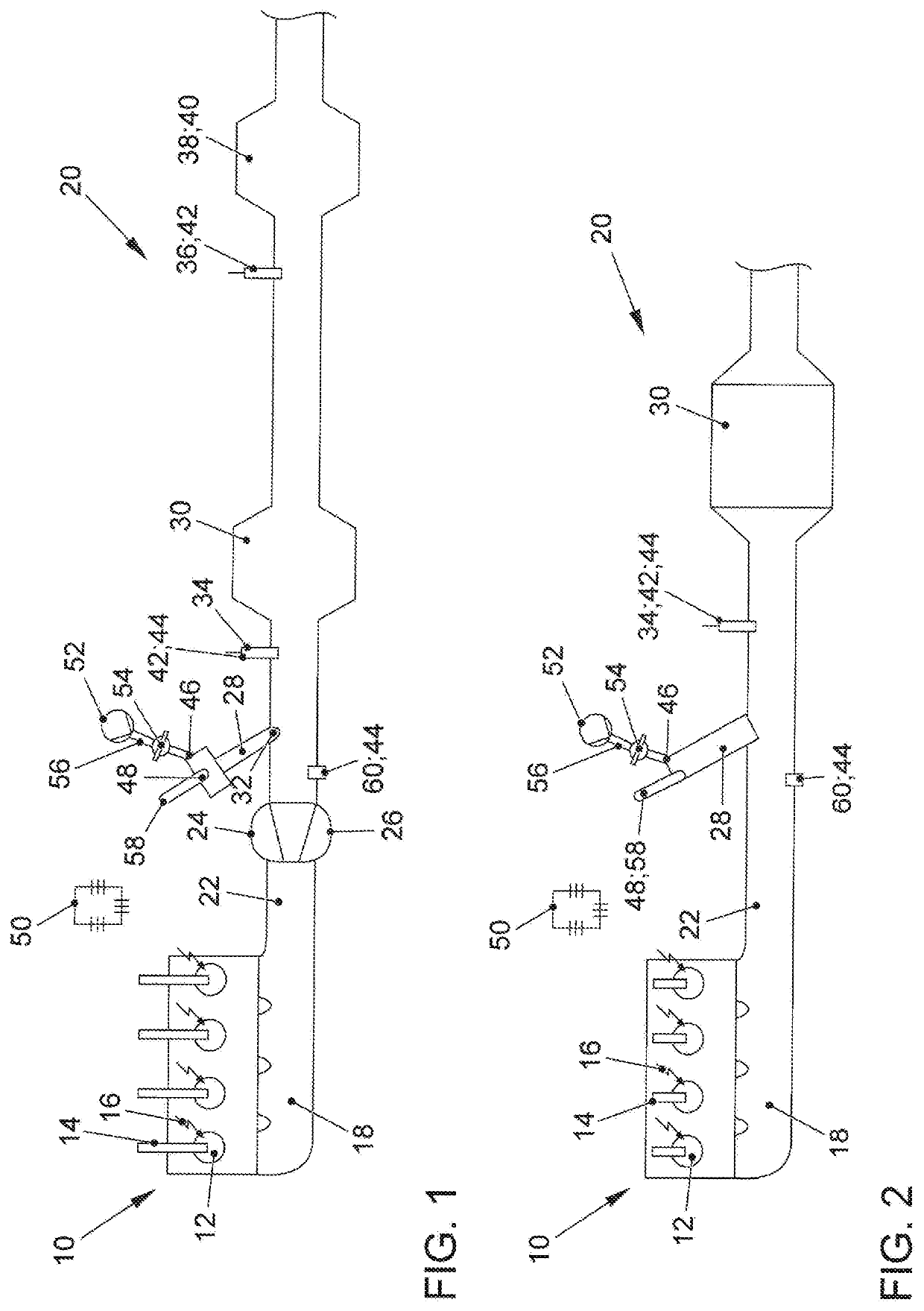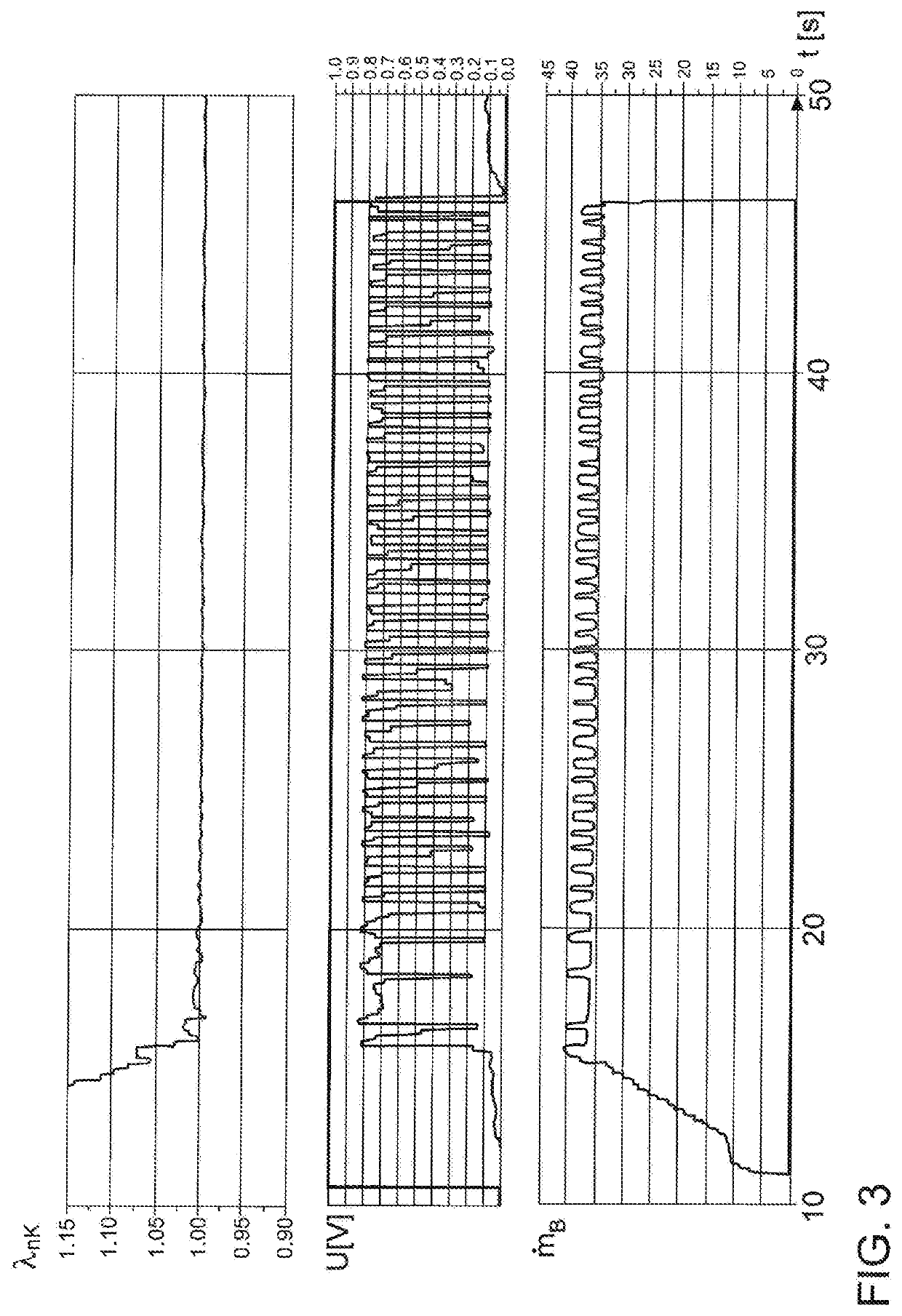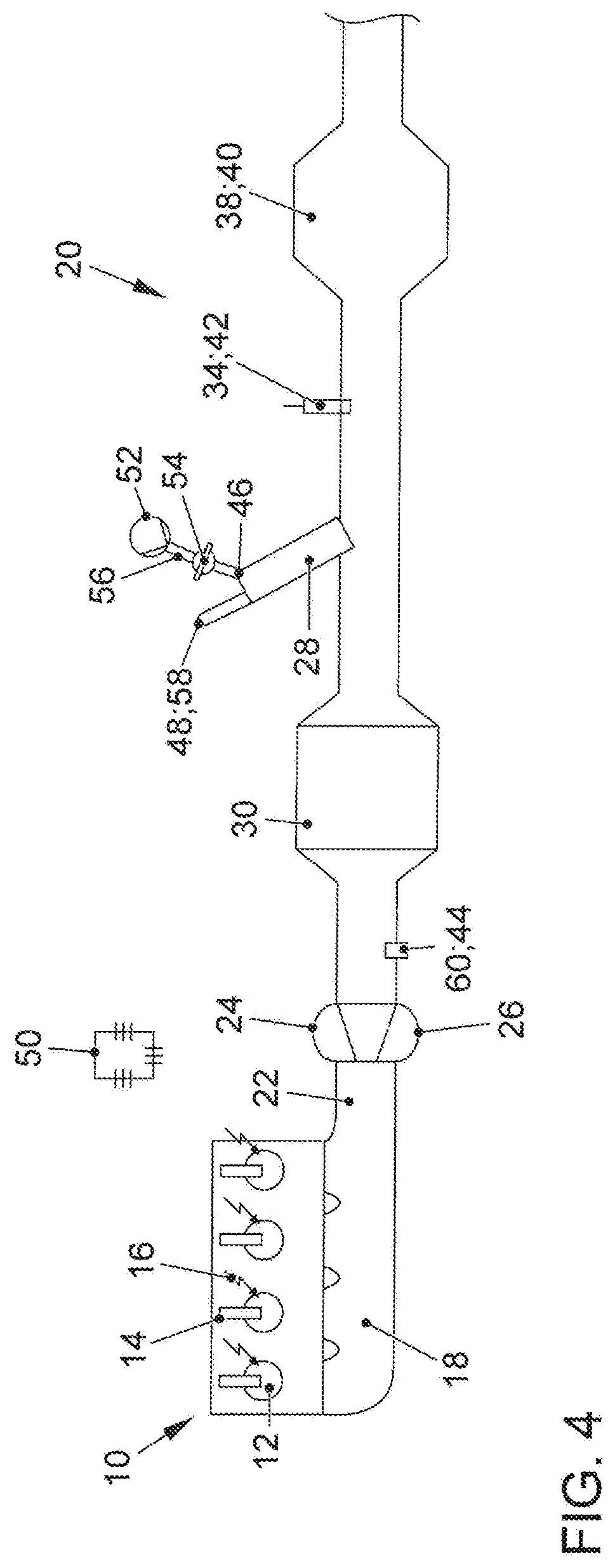Method for heating a catalytic converter and exhaust gas aftertreatment system
a catalytic converter and exhaust gas aftertreatment technology, which is applied in the direction of exhaust treatment electric control, electrical control, machines/engines, etc., can solve the problems of reducing the heat loss of the exhaust gas of the internal combustion engine to the catalytic converter, the comparatively long time passes until the catalytic converter in the underbody position has reached its light-off, and the combustion air ratio of the exhaust gas burner is pilot-controlled. , to achieve the effect of reducing the heat loss
- Summary
- Abstract
- Description
- Claims
- Application Information
AI Technical Summary
Benefits of technology
Problems solved by technology
Method used
Image
Examples
Embodiment Construction
matic illustration of an internal combustion engine 10, the outlet 18 of which is connected to an exhaust system 20 of an exhaust gas aftertreatment system according to the invention for exhaust gas aftertreatment of an exhaust gas stream from the internal combustion engine 10. The internal combustion engine 10 is designed as a gasoline engine, which is spark-ignited by means of external ignition means, in particular by means of spark plugs 16. The internal combustion engine 10 has a plurality of combustion chambers 12, in which a fuel-air mixture is burned. For this purpose, a fuel injector 14 is provided in each case at the combustion chambers 12 in order to inject a fuel into the combustion chambers 12. The internal combustion engine 10 is preferably designed as an internal combustion engine 10 charged by means of an exhaust gas turbocharger 24, wherein a turbine 26 of the exhaust gas turbocharger 24 is arranged downstream of the outlet 18 and upstream of a three-way catalytic co...
PUM
 Login to View More
Login to View More Abstract
Description
Claims
Application Information
 Login to View More
Login to View More - R&D
- Intellectual Property
- Life Sciences
- Materials
- Tech Scout
- Unparalleled Data Quality
- Higher Quality Content
- 60% Fewer Hallucinations
Browse by: Latest US Patents, China's latest patents, Technical Efficacy Thesaurus, Application Domain, Technology Topic, Popular Technical Reports.
© 2025 PatSnap. All rights reserved.Legal|Privacy policy|Modern Slavery Act Transparency Statement|Sitemap|About US| Contact US: help@patsnap.com



